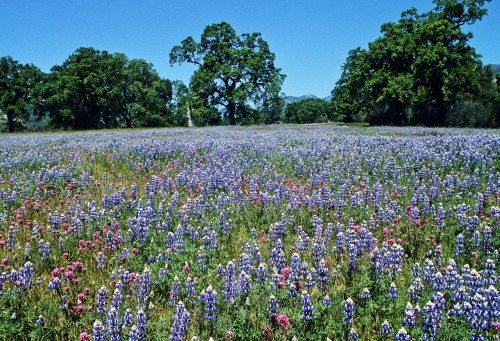 A recent day adventure took me back to a special place I hadn’t visited since 2005. Back then, I went there at the insistence of a friend who said the wildflower display there was over the top. This photo confirms his assessment. Once I saw it, I became an evangelist luring anyone who would listen to come see if the scene lived up to my wild claims. No one was disappointed.
A recent day adventure took me back to a special place I hadn’t visited since 2005. Back then, I went there at the insistence of a friend who said the wildflower display there was over the top. This photo confirms his assessment. Once I saw it, I became an evangelist luring anyone who would listen to come see if the scene lived up to my wild claims. No one was disappointed.
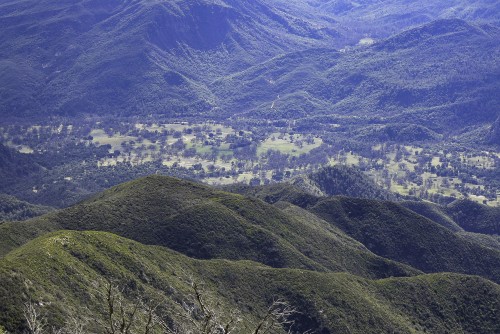 It is the Big Sur coastline that puts the Santa Lucia Range on the marquee, but I find most trails on the coast side a bit too confining. I feel as though I am walking between skyscrapers in San Francisco’s Financial District; walled in with a narrow sliver of sky overhead. Hidden on the other side of the Santa Lucias is a wide valley that nearly shames the Garden of Eden.
It is the Big Sur coastline that puts the Santa Lucia Range on the marquee, but I find most trails on the coast side a bit too confining. I feel as though I am walking between skyscrapers in San Francisco’s Financial District; walled in with a narrow sliver of sky overhead. Hidden on the other side of the Santa Lucias is a wide valley that nearly shames the Garden of Eden.
This past January, I came with my eye on Junipero Serra Peak, at 5,856′, the highest peak in the Santa Lucia Range, but it was the long valley I rediscovered that stole the show.
The walk up Junipero Serra Peak is twelve miles round trip, and the six-mile walk to the summit climbs 4,000′ feet on a trail shrouded with flesh-tearing chaparral. I was beat when I returned to the car. Of course, with each step up the view grew more spectacular, until finally at the summit, huge stretches of the Pacific and the Santa Lucia Range unfolded beneath me. But my thoughts never left the valley below.
 Like much of the Coast Range, the Santa Lucia’s are steeply corrugated and very rough. But this green valley parted the mountains with a wide twelve-mile long expanse dotted with valley oaks. Every spot was an ideal movie location some idyllic country picnic.
Like much of the Coast Range, the Santa Lucia’s are steeply corrugated and very rough. But this green valley parted the mountains with a wide twelve-mile long expanse dotted with valley oaks. Every spot was an ideal movie location some idyllic country picnic.
If the El Niño predictions come true after four years of drought, I am hopeful for a repeat of the 2005 wildflower display.
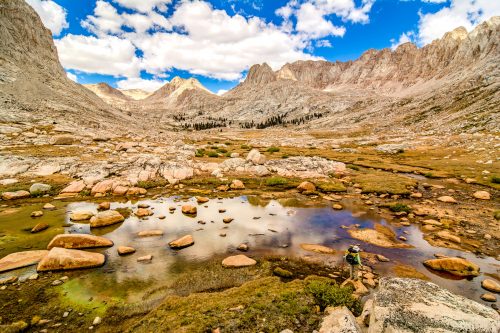
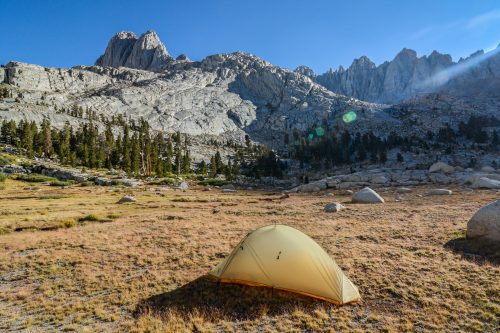
 Wherever we chose to roll out our bags, each of us was enchanted with Miter Basin. The rim of the basin is surrounded by 13,000′ peaks, and each recess above holds a mountain lake with its own unique charm. Beautiful fall reds colored a ground-hugging mosaic of alpine flora. Daybreak songs of a coyote choir echoed up and down the granite walls, adding to the mystery and magic.
Wherever we chose to roll out our bags, each of us was enchanted with Miter Basin. The rim of the basin is surrounded by 13,000′ peaks, and each recess above holds a mountain lake with its own unique charm. Beautiful fall reds colored a ground-hugging mosaic of alpine flora. Daybreak songs of a coyote choir echoed up and down the granite walls, adding to the mystery and magic. Our relationship with nature, even when we intentionally seek it, is usually superficial. Unless the scope is wide and the scenery grand, we tend to tune out. We demand grandeur. If we are not perched on the rim of the Grand Canyon or standing beneath the immense monolith of El Capitan, we often don’t take notice. It’s a pity, for we miss so much.
Our relationship with nature, even when we intentionally seek it, is usually superficial. Unless the scope is wide and the scenery grand, we tend to tune out. We demand grandeur. If we are not perched on the rim of the Grand Canyon or standing beneath the immense monolith of El Capitan, we often don’t take notice. It’s a pity, for we miss so much.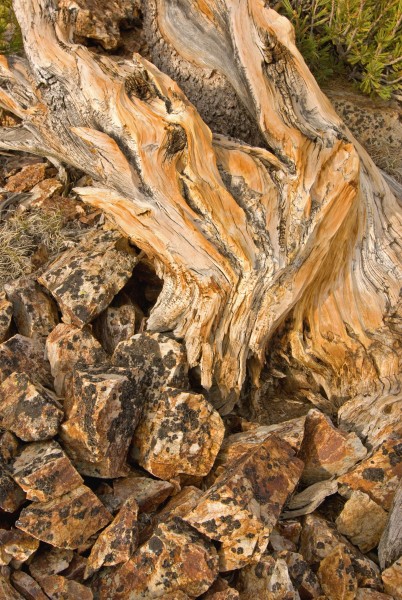 But when I open up to it, photography allows me to witness the extraordinary in places I might otherwise dismiss as ordinary. The nature of beauty I find in “ordinary” places is not vast and grand, but baby grand. The wide angle lens generally stays in the bag and is replaced by a normal or telephoto lens. Morsels of stunning beauty are often at my feet, but it doesn’t come easily to me. I have to leave the house determined to look – really look, and then see. The irony in all this is that the photographs I enjoy most are those intimate portraits of a ho-hum subject, that when abstracted from a cluttered landscape, is simply lovely.
But when I open up to it, photography allows me to witness the extraordinary in places I might otherwise dismiss as ordinary. The nature of beauty I find in “ordinary” places is not vast and grand, but baby grand. The wide angle lens generally stays in the bag and is replaced by a normal or telephoto lens. Morsels of stunning beauty are often at my feet, but it doesn’t come easily to me. I have to leave the house determined to look – really look, and then see. The irony in all this is that the photographs I enjoy most are those intimate portraits of a ho-hum subject, that when abstracted from a cluttered landscape, is simply lovely. In one of Galen Rowell’s many books about the outdoors and nature photography, I read a surprising and interesting fact about something we can see every day.
In one of Galen Rowell’s many books about the outdoors and nature photography, I read a surprising and interesting fact about something we can see every day.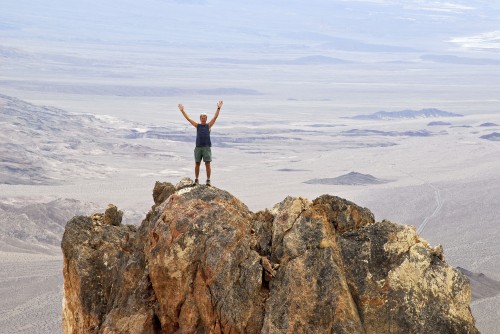 I recently wrote a post about adventure; the notion that the urge for it is a greater motivator than we recognize. I suggested that 49ers came to California as much for the adventure as for the prospect of striking it rich. As evidence, I offered the testimony of many who went to a later gold rush: the Klondike in 1898-9. As with the California Gold Rush, virtually everyone returned empty-handed, but most who were interviewed by author Pierre Berton looked back on that time with fondness and satisfaction.
I recently wrote a post about adventure; the notion that the urge for it is a greater motivator than we recognize. I suggested that 49ers came to California as much for the adventure as for the prospect of striking it rich. As evidence, I offered the testimony of many who went to a later gold rush: the Klondike in 1898-9. As with the California Gold Rush, virtually everyone returned empty-handed, but most who were interviewed by author Pierre Berton looked back on that time with fondness and satisfaction. We often buttress our case to do something new and exciting with “reasons,” but more and more, I think the real reason we want to do it is because it is new and exciting; aka an adventure.
We often buttress our case to do something new and exciting with “reasons,” but more and more, I think the real reason we want to do it is because it is new and exciting; aka an adventure.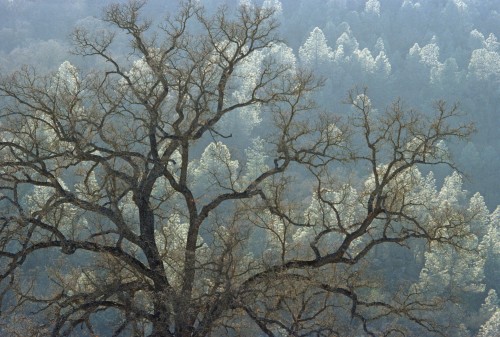 I’m not supposed to say that. It’s not PC. “Digger” is a condescending term that was used by early Eurpoean settlers to characterize some of the Native Americans in the Great Basin and in California who dug in the soil for roots and bulbs. One of our native pines inhereted that moniker as its common name, but the modern day arbiters of politeness say no, it must be changed. So, the digger pine has become the gray pine, or the ghost pine, or the foothill pine. I like digger pine. It is a good reminder of just how mean and insensitive we can be.
I’m not supposed to say that. It’s not PC. “Digger” is a condescending term that was used by early Eurpoean settlers to characterize some of the Native Americans in the Great Basin and in California who dug in the soil for roots and bulbs. One of our native pines inhereted that moniker as its common name, but the modern day arbiters of politeness say no, it must be changed. So, the digger pine has become the gray pine, or the ghost pine, or the foothill pine. I like digger pine. It is a good reminder of just how mean and insensitive we can be. I am never quite sure what the exact recipe is for a great spring wildflower display. While I enjoy botanizing in California’s Coast Range and in the Sierra, I know just enough to be dangerous. I’m likely to concoct some groundless theory and assert it as fact. But based on the significant rainfall we have had thus far, I wonder if this spring could be a memorable one.
I am never quite sure what the exact recipe is for a great spring wildflower display. While I enjoy botanizing in California’s Coast Range and in the Sierra, I know just enough to be dangerous. I’m likely to concoct some groundless theory and assert it as fact. But based on the significant rainfall we have had thus far, I wonder if this spring could be a memorable one. Naturally, rain is a must, but there have been many so-so spring blooms after a wet winter; other factors certainly play a part. It makes sense that during the recent drought years viable wildflower seeds have not received enough water to sprout. Perhaps through the sparse blooms of recent springs that seeds have been accumulating waiting for a winter like we are having now. With an average amount of rainfall during the rest of the California winter, maybe we will see a spring bloom like 1997.
Naturally, rain is a must, but there have been many so-so spring blooms after a wet winter; other factors certainly play a part. It makes sense that during the recent drought years viable wildflower seeds have not received enough water to sprout. Perhaps through the sparse blooms of recent springs that seeds have been accumulating waiting for a winter like we are having now. With an average amount of rainfall during the rest of the California winter, maybe we will see a spring bloom like 1997. Do you buy it? I may be way off base, but it sounds good.
Do you buy it? I may be way off base, but it sounds good.